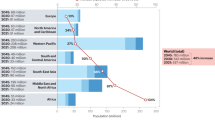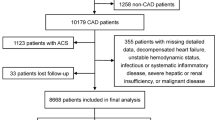Abstract
The public-health impact of cardiovascular disease (CVD) remains high despite advances in prevention and treatment. Large numbers of cardiovascular events occur in asymptomatic people who do not have a high level of risk from single risk factors or in terms of multivariable risk scores. Novel risk markers, such as carotid intima–media thickness, high-sensitivity measurement of C-reactive protein, coronary artery calcium score, and genetic risk scores have been suggested as new ways to identify candidates for primary prevention of CVD through intensive risk-factor modification. Yet, many questions remain unanswered. Can these novel markers be used to identify adults who will benefit from statin therapy? How will novel markers affect medication adherence? Is screening using these markers cost-effective? Our opinion is that clinical trials of one or more of these novel tests, combined with monitoring of traditional risk factors, are needed in asymptomatic, low-risk populations.
This is a preview of subscription content, access via your institution
Access options
Subscribe to this journal
Receive 12 print issues and online access
$209.00 per year
only $17.42 per issue
Buy this article
- Purchase on Springer Link
- Instant access to full article PDF
Prices may be subject to local taxes which are calculated during checkout


Similar content being viewed by others
References
WHO. The Global Burden of Disease: 2004 Update [online], (2008).
Expert Panel on Detection, Evaluation, and Treatment of High Blood Cholesterol in Adults. Executive Summary of The Third Report of The National Cholesterol Education Program (NCEP) Expert Panel on Detection, Evaluation, And Treatment of High Blood Cholesterol In Adults (Adult Treatment Panel III). JAMA 285, 2486–2497 (2001).
Chobanian, A. V. et al. The Seventh Report of the Joint National Committee on Prevention, Detection, Evaluation, and Treatment of High Blood Pressure: the JNC 7 report. JAMA 289, 2560–2572 (2003).
National Institute for Health and Clinical Excellence. NICE clinical guideline 67. Lipid modification: cardiovascular risk assessment and the modification of blood lipids for the primary and secondary prevention of cardiovascular disease [online], (2010).
Perk, J. et al. European Guidelines on cardiovascular disease prevention in clinical practice (version 2012): The Fifth Joint Task Force of the European Society of Cardiology and Other Societies on Cardiovascular Disease Prevention in Clinical Practice (constituted by representatives of nine societies and by invited experts) * Developed with the special contribution of the European Association for Cardiovascular Prevention & Rehabilitation (EACPR). Eur. Heart J. 33, 1635–1701 (2012).
Antithrombotic Treatment Trialists' Collaboration. Aspirin in the primary and secondary prevention of vascular disease: collaborative meta-analysis of individual participant data from randomised trials. Lancet 373, 1849–1860 (2009).
Jousilahti, P. et al. Serum cholesterol distribution and coronary heart disease risk: observations and predictions among middle-aged population in eastern Finland. Circulation 97, 1087–1094 (1998).
Law, M. R., Wald, N. J. & Morris, J. K. The performance of blood pressure and other cardiovascular risk factors as screening tests for ischaemic heart disease and stroke. J. Med. Screen. 11, 3–7 (2004).
Wald, N. J. & Morris, J. K. Assessing risk factors as potential screening tests: a simple assessment tool. Arch. Intern. Med. 171, 286–291 (2011).
Cooney, M. T., Dudina, A. L. & Graham, I. M. Value and limitations of existing scores for the assessment of cardiovascular risk: a review for clinicians. J. Am. Coll. Cardiol. 54, 1209–1227 (2009).
Wilson, P. W. et al. C-reactive protein and reclassification of cardiovascular risk in the Framingham Heart Study. Circ. Cardiovasc. Qual. Outcomes 1, 92–97 (2008).
Polonsky, T. S. et al. Coronary artery calcium score and risk classification for coronary heart disease prediction. JAMA 303, 1610–1616 (2010).
Elias-Smale, S. E. et al. Coronary calcium score improves classification of coronary heart disease risk in the elderly: the Rotterdam study. J. Am. Coll. Cardiol. 56, 1407–1414 (2010).
Erbel, R. et al. Coronary risk stratification, discrimination, and reclassification improvement based on quantification of subclinical coronary atherosclerosis: the Heinz Nixdorf Recall study. J. Am. Coll. Cardiol. 56, 1397–1406 (2010).
Nambi, V. et al. Carotid intima–media thickness and presence or absence of plaque improves prediction of coronary heart disease risk: the ARIC (Atherosclerosis Risk In Communities) study. J. Am. Coll. Cardiol. 55, 1600–1607 (2010).
Polak, J. F. et al. Carotid-wall intima–media thickness and cardiovascular events. N. Engl. J. Med. 365, 213–221 (2011).
Cooney, M. T. et al. Re-evaluating the Rose approach: comparative benefits of the population and high-risk preventive strategies. Eur. J. Cardiovasc. Prev. Rehabil. 16, 541–549 (2009).
Wald, N. J. & Law, M. R. A strategy to reduce cardiovascular disease by more than 80%. BMJ 326, 1419 (2003).
Choudhry, N. K. et al. Full coverage for preventive medications after myocardial infarction. N. Engl. J. Med. 365, 2088–2097 (2011).
Yusuf, S. et al. Effects of a polypill (Polycap) on risk factors in middle-aged individuals without cardiovascular disease (TIPS): a phase II, double-blind, randomised trial. Lancet 373, 1341–1351 (2009).
Hayward, R. A., Krumholz, H. M., Zulman, D. M., Timbie, J. W. & Vijan, S. Optimizing statin treatment for primary prevention of coronary artery disease. Ann. Intern. Med. 152, 69–77 (2010).
Baigent, C. et al. Efficacy and safety of more intensive lowering of LDL cholesterol: a meta-analysis of data from 170,000 participants in 26 randomised trials. Lancet 376, 1670–1681 (2010).
Hayward, R. A. & Krumholz, H. M. Three reasons to abandon low-density lipoprotein targets: an open letter to the Adult Treatment Panel IV of the National Institutes of Health. Circ. Cardiovasc. Qual. Outcomes 5, 2–5 (2012).
Hlatky, M. A. et al. Criteria for evaluation of novel markers of cardiovascular risk: a scientific statement from the American Heart Association. Circulation 119, 2408–2416 (2009).
Pencina, M. J., D'Agostino, R. B. Sr, D'Agostino, R. B. Jr & Vasan, R. S. Evaluating the added predictive ability of a new marker: from area under the ROC curve to reclassification and beyond. Stat. Med. 27, 157–172 (2008).
Kavousi, M. et al. Evaluation of newer risk markers for coronary heart disease risk classification: a cohort study. Ann. Intern. Med. 156, 438–444 (2012).
Ridker, P. M. et al. C-reactive protein levels and outcomes after statin therapy. N. Engl. J. Med. 352, 20–28 (2005).
Ridker, P. M., Paynter, N. P., Rifai, N., Gaziano, J. M. & Cook, N. R. C-reactive protein and parental history improve global cardiovascular risk prediction: the Reynolds Risk Score for men. Circulation 118, 2243–2251 (2008).
Ridker, P. M. et al. Rosuvastatin to prevent vascular events in men and women with elevated C-reactive protein. N. Engl. J. Med. 359, 2195–2207 (2008).
Ridker, P. M. et al. Measurement of C-reactive protein for the targeting of statin therapy in the primary prevention of acute coronary events. N. Engl. J. Med. 344, 1959–1965 (2001).
Voros, S. et al. Guideline for minimizing radiation exposure during acquisition of coronary artery calcium scans with the use of multidetector computed tomography: a report by the Society for Atherosclerosis Imaging and Prevention Tomographic Imaging and Prevention Councils in collaboration with the Society of Cardiovascular Computed Tomography. J. Cardiovasc. Comput. Tomog. 5, 75–83 (2011).
United States Nuclear Regulatory Commission. Fact Sheet on Biological Effects of Radiation [online], (2012).
Blaha, M. J. et al. Associations between C-reactive protein, coronary artery calcium, and cardiovascular events: implications for the JUPITER population from MESA, a population-based cohort study. Lancet 378, 684–692 (2011).
Paynter, N. P. et al. Association between a literature-based genetic risk score and cardiovascular events in women. JAMA 303, 631–637 (2010).
Ripatti, S. et al. A multilocus genetic risk score for coronary heart disease: case–control and prospective cohort analyses. Lancet 376, 1393–1400 (2010).
Machaalany, J. et al. Potential clinical and economic consequences of noncardiac incidental findings on cardiac computed tomography. J. Am. Coll. Cardiol. 54, 1533–1541 (2009).
Rozanski, A. et al. Impact of coronary artery calcium scanning on coronary risk factors and downstream testing: the EISNER (Early Identification of Subclinical Atherosclerosis by Noninvasive Imaging Research) prospective randomized trial. J. Am. Coll. Cardiol. 57, 1622–1632 (2011).
Greenland, P. et al. 2010 ACCF/AHA guideline for assessment of cardiovascular risk in asymptomatic adults: a report of the American College of Cardiology Foundation/American Heart Association Task Force on Practice Guide-lines. J. Am. Coll. Cardiol. 56, e50–e103 (2010).
Cholesterol Treatment Trialists' (CTT) Collaborators. The effects of lowering LDL cholesterol with statin therapy in people at low risk of vascular disease: meta-analysis of individual data from 27 randomised trials. Lancet http://dx.doi.org/10.1016/S0140-6736(12)60367-5.
Centers for Disease Control and Prevention. National Center for Health Statistics (NCHS): National Health and Nutrition Examination Survey Questionnaire, Examination Protocol, and Laboratory Protocol. U. S. Department of Health and Human Services, Centers for Disease Control and Prevention, Hyattsville, MD, 2005–2008.
Ambrosius, W. T. et al. Design of the value of imaging in enhancing the wellness of your heart (VIEW) trial and the impact of uncertainty on power. Clin. Trials 9, 232–246 (2012).
Kuklina, E. V., Yoon, P. W. & Keenan, N. L. Trends in high levels of low-density lipoprotein cholesterol in the United States, 1999–2006. JAMA 302, 2104–2110 (2009).
Mosca, L. et al. National study of physician awareness and adherence to cardiovascular disease prevention guidelines. Circulation 111, 499–510 (2005).
Montgomery, A. A., Fahey, T., Peters, T. J., MacIntosh, C. & Sharp, D. J. Evaluation of computer based clinical decision support system and risk chart for management of hypertension in primary care: randomised controlled trial. BMJ 320, 686–690 (2000).
Ornstein, S. et al. A multimethod quality improvement intervention to improve preventive cardiovascular care: a cluster randomized trial. Ann. Intern. Med. 141, 523–532 (2004).
Author information
Authors and Affiliations
Contributions
Both authors researched data for the article, contributed to the discussion of content, and wrote the manuscript.
Corresponding author
Ethics declarations
Competing interests
The authors declare no competing financial interests.
Rights and permissions
About this article
Cite this article
Polonsky, T., Greenland, P. CVD screening in low-risk, asymptomatic adults: clinical trials needed. Nat Rev Cardiol 9, 599–604 (2012). https://doi.org/10.1038/nrcardio.2012.114
Published:
Issue Date:
DOI: https://doi.org/10.1038/nrcardio.2012.114
This article is cited by
-
Multi-view carotid ultrasound is stronger associated with cardiovascular risk factors than presence of plaque or single carotid intima media thickness measurements in subclinical atherosclerosis
The International Journal of Cardiovascular Imaging (2023)
-
Knowledge of cardiovascular disease risk and exercise duration among asymptomatic sedentary male individuals participating in Islamic prayer (Salaah)
BMC Sports Science, Medicine and Rehabilitation (2022)
-
The Danish Cardiovascular Screening Trial (DANCAVAS): study protocol for a randomized controlled trial
Trials (2015)



